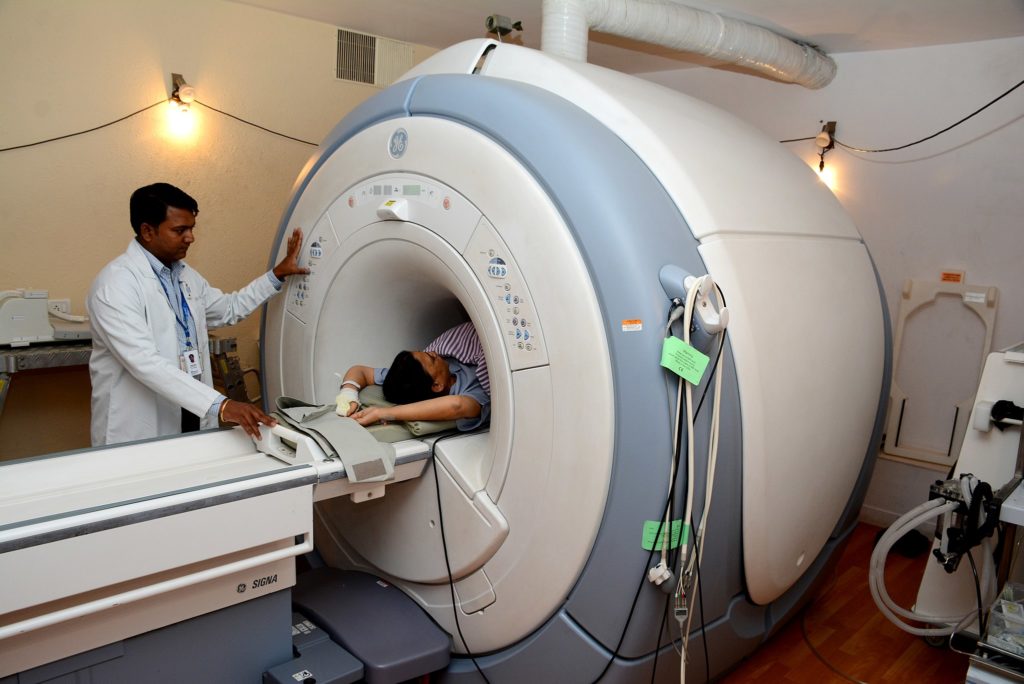In 2004, the International Atomic Energy Agency (IAEA) created guidance for securing these sources. But more than 15 years later, many countries do not have the necessary laws, interagency coordination, or resources for detection and training.1 Ambassador Maria Assunta Accili, Permanent Representative of Italy to the International Organizations in Vienna in Inna Pletukhina, “Cooperation, Coordination, and Communication Key to Securing Radioactive Material: IAEA Conference,” December 14, 2018, https://www.iaea.org/newscenter/news/cooperation-coordination-and-communication-key-to-securing-radioactive-material-iaea-conference. As a result, radioactive materials remain notably vulnerable to use by violent groups.
Problem
The 2018 IAEA Conference on the Security of Radioactive Material revealed woeful shortcomings in the capacity of many governments to secure the hundreds of thousands of radioactive sources used and traded everywhere across the globe. So far, we have been lucky. From 1996 through 2016, there were only 55 incidents where violent non-State actors have planned or used radioactive sources.2Gary Ackerman and Michelle Jacome (2018), “WMD Terrorism WMD Terrorism: The Once and Future Threat,” PRISM, 7, 3, pp. 22-37. Use of a radiological weapon by terrorists or other criminals would have an immense impact. In 2018, Sandia National Laboratories estimated that the detonation of a Radiological Dispersal Device (RDD) using an IAEA Category 3 radiological source in New York3The IAEA categorizes radiological sources 1 through 5, 1 being the most radioactive, and 5 being unable to cause permanent injury. https://www.nrc.gov/reading-rm/basic-ref/glossary/category-of-radioactive-sources.html city would have a $24 billion impact and, and even though it would cause no direct fatalities, the required evacuations would cause about 800 deaths (based on evidence from evacuations after the Fukushima, Japan nuclear accident).4United States Government Accountability Office (2019), “Combating Nuclear Terrorism: NRC Needs to Take Additional Actions to Ensure the Security of High-Risk Radioactive Material,” Report to Congressional Committees, GAO-19-468 (Washington, DC: April). As important, such an event would likely prompt international action – and likely over-reaction – to constrain trade in radioactive sources, a trade in which virtually every country participates and on which many lives depend.
Background
In 2004, the IAEA released its Code of Conduct on the Safety and Security of Radioactive Sources, followed in 2011 by its Guidance on the Import and Export of Radioactive Sources. Although the IAEA’s data on legal frameworks to implement the Code and the Guidance is not public, open sources make clear that significant implementation gaps exist in most States.
Low levels of Safety and Security. The Stimson Center has developed two databases on the national legal frameworks to secure radioactive sources in all 193 UN Member States as evaluated against key elements of the IAEA Code of Conduct. Figure 1 reflects the finding that many states’ laws are not yet consistent with the Code.
Lax Import and Export Requirements. Because of their many legitimate applications, radioactive sources are commonly traded across the globe. From 2015 to 2018, 161 of the 163 countries that have reported trade of any type reported trade in radiological goods5According to UN COMTRADE Data — radiological elements, isotopes, and compounds and/or radiological apparatus. But as of 2018, however, only 114 countries have committed to implementing the Guidance on the Import and Export of Radioactive Sources.
Accordingly, the Stimson Center developed two databases on the national legal framework to manage trade in radioactive sources in all 193 UN Member States as evaluated against key elements of the IAEA Guidance. Figure 2 demonstrates the findings from this data: Many countries’ laws are not consistent with IAEA import and export guidance.
The President Should:
Ensure strong domestic security and import/export standards for all radioactive sources. The Nuclear Regulatory Commission should develop new standards for, and improve security measures for, licensees of all IAEA Categories of radioactive sources. This should include increased funding.
Strengthen international institutions working on radiological source security. Increase financial support for radiological source security projects of the IAEA Department of Nuclear Safety and Security’s Nuclear Security Division, with emphasis on including radiological source security in Technical Cooperation projects. The president could also direct diplomatic efforts to universalize and fully implement the International Convention on the Suppression of Terrorist Acts.
Focus NNSA’s outreach efforts on standards and resource access. The president should instruct the NNSA’s Office of Radiological Security to focus on partnering with the IAEA, U.S. domestic authorities, and other governments and states to improve and adopt new legal measures for securing radioactive sources and to improve detection and training resources worldwide.
Notes
- 1Ambassador Maria Assunta Accili, Permanent Representative of Italy to the International Organizations in Vienna in Inna Pletukhina, “Cooperation, Coordination, and Communication Key to Securing Radioactive Material: IAEA Conference,” December 14, 2018, https://www.iaea.org/newscenter/news/cooperation-coordination-and-communication-key-to-securing-radioactive-material-iaea-conference.
- 2Gary Ackerman and Michelle Jacome (2018), “WMD Terrorism WMD Terrorism: The Once and Future Threat,” PRISM, 7, 3, pp. 22-37.
- 3The IAEA categorizes radiological sources 1 through 5, 1 being the most radioactive, and 5 being unable to cause permanent injury. https://www.nrc.gov/reading-rm/basic-ref/glossary/category-of-radioactive-sources.html
- 4United States Government Accountability Office (2019), “Combating Nuclear Terrorism: NRC Needs to Take Additional Actions to Ensure the Security of High-Risk Radioactive Material,” Report to Congressional Committees, GAO-19-468 (Washington, DC: April).
- 5According to UN COMTRADE Data



